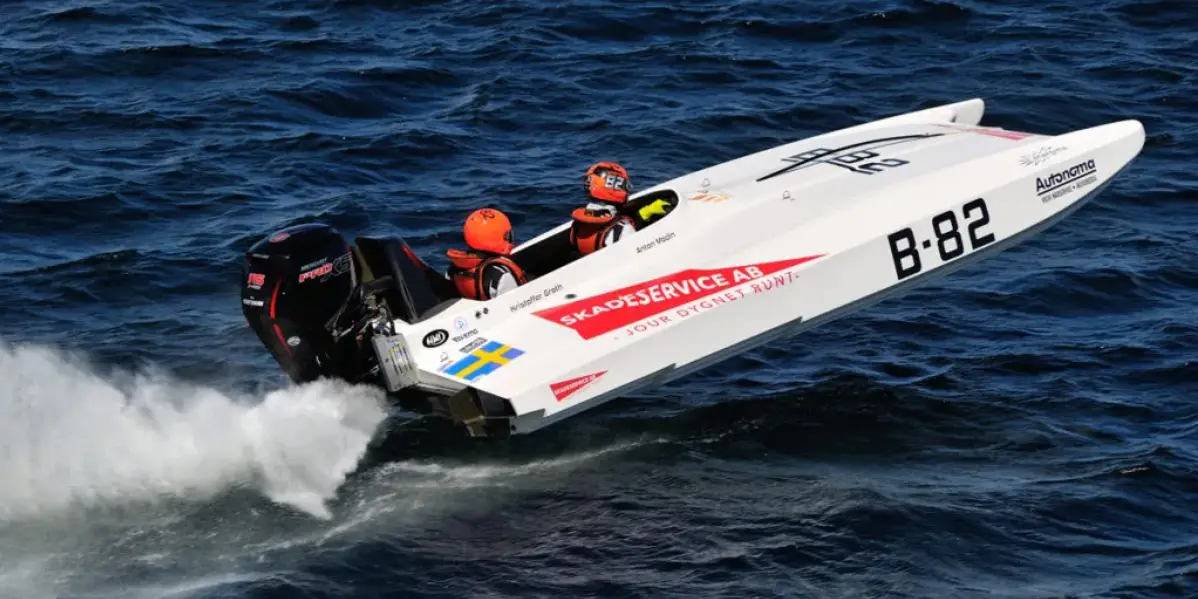Three-Event Championship Approved by UIM COMINOFF
Plans for the 2026 Offshore Class 3B World and European Championships have cleared the UIM COMINOFF approval stage, setting up what organisers hope will be a landmark season for offshore powerboat racing’s entry class.
Yet as the outlines of the calendar spread through the paddock, teams are weighing enthusiasm against cost. The approved venues present a challenging logistical puzzle for small-budget operations.
The 2026 calendar comprises:
- World Championship (two rounds): Cervia, Italy (June) and Arendal, Norway (late July/early August)
- European Championship: Tvedestrand, Norway (early July)
Three races across three respected venues, but potentially three long journeys for teams operating on modest budgets.
Entry Class or Expensive Commitment?
Class 3B was created to offer newcomers a manageable route into offshore racing. The class runs Twister catamarans powered by Mercury 115 ProXS engines.
The proposed 2026 calendar demands almost continental-level travel: an early-summer run to Italy, back north for the European Championship, then south again for the final world round. With ferry tickets, fuel, and accommodation adding up, many crews are running the numbers before confirming their intentions.
Between rising equipment costs and international logistics, the distinction between learning class and full professional campaign is becoming increasingly blurred.
Historical Precedent: When Travel Killed Championships
The concerns are not hypothetical. In 2022, UIM Class 3D faced a near-identical crisis when Italian teams resisted travelling to Norway for championship rounds at Tvedestrand and Larvik. The UIM Offshore Committee threatened to revoke world championship status if minimum entries were not met.
Giovanni Carpitella, the defending 3D World Champion, expressed his frustration at the time:
We have pushed the UIM for more events, now we have it, and now drivers don’t want to travel to the two rounds in Norway. It’s crazy! I have travelled around the world for these offshore events for the last 25/30 years, and never have we been offered travel money.
The situation highlighted a fundamental tension in UIM Class 3 racing: southern European teams prefer Mediterranean venues, while Nordic clubs have the infrastructure and enthusiasm to host events but struggle to attract travelling competitors.
Participation Numbers Tell the Story
Historical Class 3B participation reveals both the class’s strength and its geographic concentration. The 2012 UIM Class 3B World Championship at Tvedestrand attracted 23 registered teams. The 2022 World Championship at Öregrund, Sweden, saw a more modest field, with Swedish crews Anton Modin and Kristoffer Groth claiming the title ahead of compatriots Rasmus Hamrén and Madeleine Samuelsson.
The 2024 World Championship at Arendal drew 18 Class 3B teams to the single-event format held from August 1-4. More encouragingly, additional teams have joined the Norwegian Class 3B series since then, suggesting the class could field 20-plus drivers in 2026 if all commit to the championship.
However, this healthy participation comes with a caveat: the vast majority of these teams are Norwegian, Swedish or Finnish. The question is not whether Class 3B has sufficient numbers, but whether Nordic crews can afford to travel south for the Italian round while still supporting their northern championship dates.
For UIM recognition, each world championship round must field at least five starters from three nations. The Cervia round faces the steepest challenge: attracting Nordic teams to make the long haul to Italy when there are no local Italian competitors to bolster the grid.
The Italian Question
While Italy hosts the opening World Championship round at Cervia, there are currently no regularly active Italian Class 3B boats on the circuit. Organisers have mentioned several potential domestic entries, but none have appeared on starting grids in recent seasons.
Italy maintains strong participation in UIM Class 3D and endurance racing on venues like Lake Como, but Class 3B has remained absent from Italian waters. This means Cervia, and any future Italian venues, will rely heavily on travelling teams from northern Europe.
Industry talk continues about a possible Class 3B appearance at Lake Como, aimed at rebuilding Italian participation through demonstrations and media outreach. However, with Cervia already confirmed and budgets stretched, some fear that adding another Italian event could spread the field even thinner.
Nordic Pressure and a Split Calendar
For Finnish and Swedish competitors, 2026 presents a tough logistical equation. Committing to both World Championship rounds plus the European Championship could mean three major hauls across Europe in eight weeks.
With 18 teams competing at Arendal in 2024 and more joining the Norwegian series since, the Class 3B field is healthy and growing. The concern is not whether there are enough competitors, but whether the calendar will split them between those who can afford international travel and those who focus exclusively on Nordic events.
Several teams have already indicated they may focus on either the northern events or their national series to keep costs under control. Tvedestrand’s European Championship remains the most universally supported date, seen as geographically fair and financially feasible for the Nordic community that has sustained the class.
The Nordic Class 3B community has thrived on cooperation, with Swedish, Finnish and Norwegian teams regularly supporting one another’s national races to maintain healthy grids. If resources are redirected toward long-haul World Championship travel, those domestic events may suffer, undermining the same grassroots network that has kept the class viable.
Balancing Vision and Viability
UIM’s approval of Cervia, Tvedestrand and Arendal underscores confidence in Class 3B’s international future. The Norwegian venues have proven themselves as capable hosts, with Arendal Båtsport Klubb and Tvedestrand Racing Klubb both bringing strong organisational experience.
The class itself is healthy, with 18 teams competing at Arendal in 2024 and additional crews joining the Norwegian series since. If all commit, 2026 could see fields of 20-plus boats at the Nordic venues. The challenge is not attracting competitors to powerboat racing, but convincing them to travel across a continent.
The real question facing organisers is whether the three-event calendar will unite a Nordic-dominated class into a truly international championship, or simply split an already concentrated field between those who can afford the Italian journey and those who cannot.
Cervia presents the biggest test: can a venue with no local Class 3B presence attract sufficient Nordic teams to meet UIM’s minimum requirements? The answer will determine whether 2026 sees the class expand beyond its Scandinavian heartland, or whether it remains what it has always been: a successful Nordic series seeking international recognition it may not need.
If the calendar succeeds in drawing competitors south, Class 3B could fulfill the UIM’s vision of a sustainable entry class that prepares young talent for larger offshore disciplines. If not, it may prove that ambition and affordability remain fundamentally at odds in the lower echelons of powerboat racing.

John Moore’s involvement in powerboat racing began in 1981 when he competed in his first offshore powerboat race. After a career as a Financial Futures broker in the City of London, specialising in UK interest rate markets, he became actively involved in event organisation and powerboat racing journalism.
He served as Event Director for the Cowes–Torquay–Cowes races between 2010 and 2013. In 2016, he launched Powerboat Racing World, a digital platform providing global powerboat racing news and insights. The following year, he co-founded UKOPRA, helping to rejuvenate offshore racing in the United Kingdom. He sold Powerboat Racing World in late 2021 and remained actively involved with UKOPRA until 2025.
In 2025, he established Powerboat News, returning to independent journalism with a focus on neutral and comprehensive coverage of the sport.



